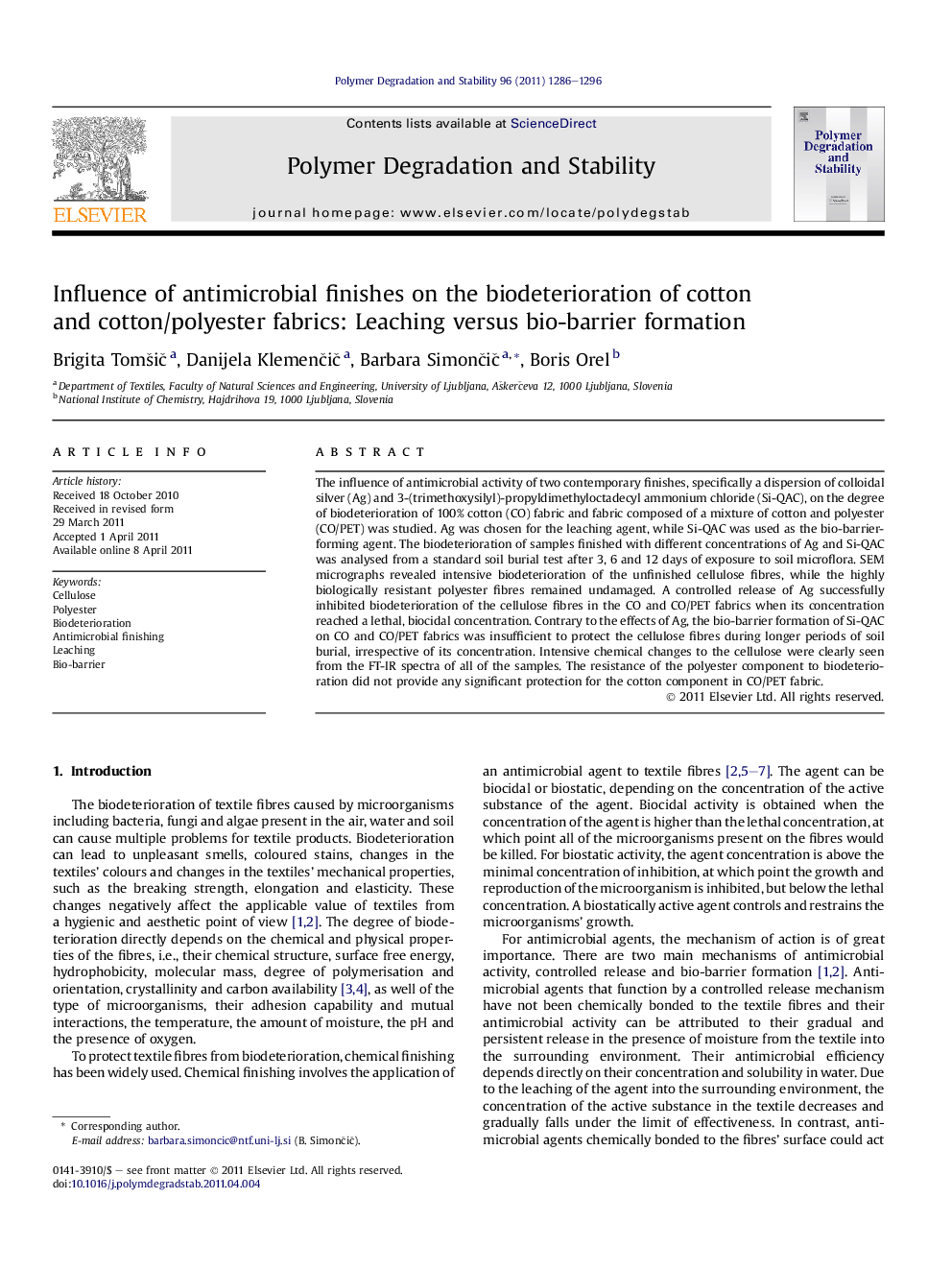| Article ID | Journal | Published Year | Pages | File Type |
|---|---|---|---|---|
| 5203587 | Polymer Degradation and Stability | 2011 | 11 Pages |
Abstract
The influence of antimicrobial activity of two contemporary finishes, specifically a dispersion of colloidal silver (Ag) and 3-(trimethoxysilyl)-propyldimethyloctadecyl ammonium chloride (Si-QAC), on the degree of biodeterioration of 100% cotton (CO) fabric and fabric composed of a mixture of cotton and polyester (CO/PET) was studied. Ag was chosen for the leaching agent, while Si-QAC was used as the bio-barrier-forming agent. The biodeterioration of samples finished with different concentrations of Ag and Si-QAC was analysed from a standard soil burial test after 3, 6 and 12 days of exposure to soil microflora. SEM micrographs revealed intensive biodeterioration of the unfinished cellulose fibres, while the highly biologically resistant polyester fibres remained undamaged. A controlled release of Ag successfully inhibited biodeterioration of the cellulose fibres in the CO and CO/PET fabrics when its concentration reached a lethal, biocidal concentration. Contrary to the effects of Ag, the bio-barrier formation of Si-QAC on CO and CO/PET fabrics was insufficient to protect the cellulose fibres during longer periods of soil burial, irrespective of its concentration. Intensive chemical changes to the cellulose were clearly seen from the FT-IR spectra of all of the samples. The resistance of the polyester component to biodeterioration did not provide any significant protection for the cotton component in CO/PET fabric.
Related Topics
Physical Sciences and Engineering
Chemistry
Organic Chemistry
Authors
Brigita TomÅ¡iÄ, Danijela KlemenÄiÄ, Barbara SimonÄiÄ, Boris Orel,
